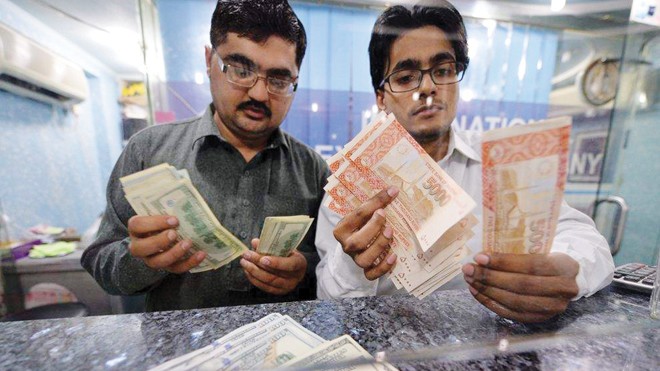
The recent deportation of Pakistanis from the Gulf region is unprecedented and a pressure on the Pakistani economy

In February this year, Saudi Gazette, an English language daily from Saudi Arabia, reported that more than 39,000 Pakistani workers were deported from the Kingdom of Saudi Arabia (KSA) during the past four months for "violating the rules of residence and work". Some of them were also deported on terrorism charges.
Deportation of Pakistanis is not unusual; however, it is unprecedented that in a short period of time such a large number of Pakistanis have been deported.
From the year 2012 to 2015, Saudi government sent back 131,643 Pakistanis, according to a report titled, "Labour Migration from Pakistan: 2015" released in 2016 by the Federal Investigation Agency (FIA).
Pakistani workers’ deportation in the last few months is mainly due to economic crisis in Saudi Arabia. The declining petroleum prices in the world market and stalled infrastructure development projects have affected the economy in that country. Many infrastructure companies are either closing down or downsizing.
Saudi Arabia is facing the worst-ever budget deficit of 13.5 per cent of GDP in 2015 (a 4.7 times deficit recorded in 2014), which has resulted in sluggish Saudi economy. Thousands of workers lost their job as major construction companies closed down.
In September 2016, a giant construction company, Oger, laid off around 30,000 of its worker, including thousands of Pakistanis, who had not got their salaries for over six months. As reported in the media, over 8,500 Pakistanis employed by two Saudi firms did not receive their salaries for a few months, and were also facing issues securing end-of-service benefits. It was a human tragedy that some of these unemployed workers had to beg for food in the kingdom.
Around 50 per cent of total Pakistani remittances come from Saudi Arabia and the United Arab Emirates (UAE) and if the US and UK are included in the list, the remittances from these four countries account for 79 per cent of the total Pakistan remittances.
Other Arab countries like Bahrain, Kuwait, Qatar and Oman are also contributing to the remittances where Pakistanis are working in substantial numbers. Other countries from where Pakistan receives remittances include: Norway, Switzerland, Australia, Canada, and Japan.
Strict laws against money laundering and complete ban on illegal Hawala and Hundi money transfer system in the US and Europe have also restricted the inflow of remittances to Pakistan. A leading Pakistani foreign exchange agent, Altaf Khanani, was arrested in September last year in the US on charges of money laundering. He later pleaded guilty before a United States court.
"Pakistan is going to sign an agreement with Switzerland on exchange of information regarding bank accounts on March 21, which would expose the tax-evaded money kept in Swiss banks accounts," says Dr. Shahid Hasan Siddiqui, a senior banker and Chairman of Research Institute of Islamic Banking and Finance.
He said the government is also considering launching a new tax amnesty scheme for Pakistanis with foreign bank accounts to bring back money to legalise it. "The foreign bank account holders would pay a nominal tax for bringing back the wealth abroad," he adds.
Pakistan’s foreign exchange reserves are at reasonable levels, equal to about seven months import bill, the cushion provided by remittances will not be available at least for the current year. Exports are already declining. According to SBP, on Mach 10, 2017 Pakistan’s foreign exchange reserves remained around US$ 22.274 billion as compared to US$ 24.025 billion available on October 16, 2016.
Experts hope the Arab economy may improve during the current year as petroleum prices have increased in the last couple of months but there is little chance of an increase in the remittances from Arab countries during the year 2017 and it would take some more years for the Gulf economies to make a return.
According to Annual Report of State Bank of Pakistan 2015-16, even if oil prices recover, it is unlikely that the Arab states will scale up their infrastructure spending immediately, thus remittances would remain sluggish during the current fiscal year.
The inflow of remittances has declined by 2.5 percent to US$ 12.363 billion during the first eight months of the current fiscal year (July 2016 to February 2017) as compared with US$ 12.67 billion in the corresponding period of the last fiscal year, according to SBP.
Statistics indicate that during February 2017 the inflows of worker’s remittances amounted to US$ 1416.92 million, which is 4.7 per cent less than January 2017 and 6.9 per cent less than February 2016.
Pakistan’s exports are also declining, which has resulted in the widening of trade deficit to 35 per cent year-on-year to $20.202 billion in the first eight months of the current fiscal year. The trade deficit stood at $2.807 billion in February alone, which is an increase of 87.88 per cent from a year ago, the Pakistan Bureau of Statistics (PBS) data indicates.
During July-February, the overall imports shot up by 15.99 per cent year-on-year to US$ 33.52 billion. In February alone, it increased by 35.52 per cent to US$ 4.445 billion. Export proceeds during the eight-month of the fiscal dropped by 3.90 per cent to US$ 13.318 billion. In February, exports dropped by 8.29 per cent at US$ 1.638 billion against US$ 1.786 billion in February 2016.
With widening trade deficit and current account deficit, Pakistan faces challenges of declining foreign exchange, especially when the International Monitory Fund (IMF) has ended its programme and exports are continuously declining. In such a situation, declining remittances from overseas Pakistan has added to the pressure on foreign exchange reserves.
A recent inflow of Foreign Direct Investment (FDI) from China in infrastructure and energy projects has provided a support base to the dwindling foreign exchange, but increase in import bill is the main cause of concern.